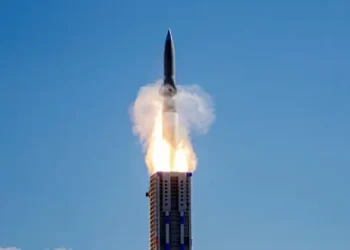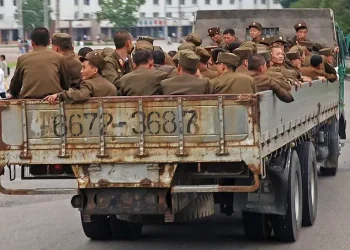In a move signaling strengthened Indo-Pacific cooperation, Secretary of State Marco Rubio met with Philippine President Ferdinand Marcos, Jr. in Washington, D.C.
The two leaders reinforced mutual defense commitments, expanded economic cooperation, and marked a turning point in U.S.-Philippine relations ahead of the alliance’s 80th anniversary.
Rubio, Marcos Solidify Strategic Alliance in Washington
On July 21, 2025, Secretary of State Marco Rubio hosted Philippine President Ferdinand Marcos, Jr. in Washington, D.C., reaffirming the two countries’ long-standing Mutual Defense Treaty.
The bilateral meeting, held in advance of President Marcos’s upcoming engagement with President Trump, highlighted renewed efforts to bolster joint security, economic resilience, and maritime cooperation across the Indo-Pacific.
President Marcos later joined U.S. Secretary of Defense Pete Hegseth at the Pentagon for in-depth defense discussions, signaling a shared commitment to strategic deterrence, military modernization, and regional peace.

Critical Priorities: Defense, Economy, and Stability
Both meetings emphasized key themes shaping future cooperation:
-
Mutual Defense: Leaders reaffirmed that the U.S.-Philippines Mutual Defense Treaty remains the cornerstone of their security alliance, explicitly covering armed attacks across the Pacific, including the South China Sea.
-
Joint Exercises: Military drills such as Balikatan 2025—the largest and most complex iteration yet—showcase interoperability and operational readiness among allies.
-
Economic Cooperation: A strong focus was placed on the Luzon Economic Corridor, a multilateral initiative to enhance supply chains and infrastructure between both countries.
“We’ve achieved our purpose,” said Marcos. “Our forces are learning not just with the U.S., but also with regional partners.”
Shared Vision: Peace Through Strength
Secretary Hegseth described the alliance as “stronger and more essential than ever.”
Underlining the “peace through strength” doctrine championed by President Trump, he emphasized the Pentagon’s commitment to deterrence and technological advancement.
Areas of Strategic Alignment
| Focal Areas | U.S. Objective | Philippines Partnership Goals |
|---|---|---|
| Security Cooperation | Reinforce Indo-Pacific deterrence posture | Strengthen military readiness |
| Economic Growth | Expand regional trade and infrastructure | Develop Luzon Corridor and supply chains |
| Maritime Defense | Ensure freedom of navigation in disputed waters | Uphold sovereignty in the South China Sea |
| Military Modernization | Deploy next-gen unmanned systems and missiles | Upgrade Philippine defense capabilities |
Progress Since March and the Road Ahead
Secretary Hegseth’s return to Manila in March set the tone for accelerated engagement.
Since then:
-
Joint military planning has expanded to include cyber, space, and information warfare domains.
-
The Balikatan 2025 exercise drew over 14,000 personnel from more than 20 countries, underscoring the Philippines’ growing strategic relevance.
President Marcos welcomed continued collaboration, noting the practical value of the exercises and the symbolic strength of U.S. support. He stressed that cooperation now spans “every sector” and highlighted the evolving geopolitical landscape as a driver for deeper alignment.

A Broader Indo-Pacific Strategy
Beyond bilateral gains, both parties emphasized multilateral unity across the Indo-Pacific. The Philippines’ participation in Talisman Saber in Australia and other regional collaborations demonstrate growing momentum toward a collective defense posture.
“Our alliance preserves peace not just in the South China Sea,” Marcos remarked, “but throughout the Indo-Pacific.”
Looking Ahead to 2026
With the 80th anniversary of U.S.-Philippine diplomatic relations approaching in 2026, expectations for deeper cooperation are high. Both governments appear poised to expand not just military readiness, but also civil and economic ties.
The Final Roundup
The recent meetings between Secretary Rubio, President Marcos, and Secretary Hegseth reaffirm the vitality of the U.S.-Philippines alliance.
As global dynamics shift and regional tensions escalate, both nations continue to prioritize mutual defense, economic growth, and lasting security partnerships.
Stay informed on important international alliances and future regional developments by following our latest coverage.
Sources: US Department of Defense, DoD Meeting Transcript, and US Department of State.
Prepared by Ivan Alexander Golden, Founder of THX News™, an independent news organization delivering timely insights from global official sources. Combines AI-analyzed research with human-edited accuracy and context.









